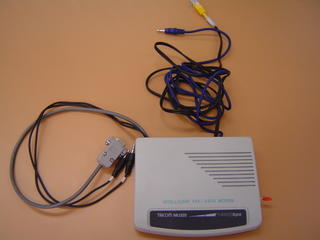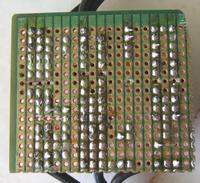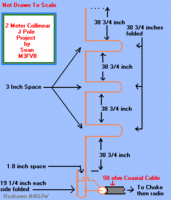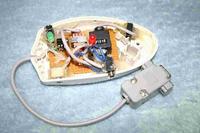ITALY JOINS NO-CODE RANKS AS FCC REVIVES MORSE DEBATE IN THE USItaly is reported to be the latest country added to the list of
those that no longer require Amateur Radio applicants to have
passed a Morse codeexamination to gain HF access.
The Daily DX <
http://www.dailydx.com/>reported this week
that current IW-prefix "no-code" VHF/UHF licensees in Italy
now will be allowed operate on HF.
Canada eliminated Morse as the"sole additional requirement"
for HF access in late July. To date, more than two dozen countries
around the world, including such major players as the
United Kingdom, Germany, Australia and New Zealand,
no longer requireAmateur Radio applicants to pass a Morse
code examination to operate below 30 MHz.
If the FCC's past observations on the subject are any clue, the
US may join the no-code-required club in the future."We believe
that an individual's ability to demonstrate increased Morse
code proficiency is not necessarily indicative of that individual's
ability to contribute to the advancement of the radio art," the
FCC maintained in itsDecember 1999 Amateur Radio restructuring
Report and Order (R&O)
<
http://www.arrl.org/announce/regulatory/wt98-143ro.pdf>.
"As a result, we find that such a license qualification rule is not
in furtherance of the purpose of the amateur service, and we do
not believe that it continues to serve a regulatory purpose
to require amateur applicants to demonstrate Morse ability.
In its Notice of Proposed Rule Making and Order (NPRM&O)<
http://hraunfoss.fcc.gov/edocs_public/attachmatch/FCC-05-143A1.pdf>
in WTDocket 05-235, released July 19, 2005,
the FCC proposed to eliminate the 5WPM telegraphy examination
altogether. At the same time, it dismissed petitions calling for,
among other things, a new entry-level license with HF privileges.
In wording that closely mirrored remarks in its 1999 restructuring
R&O, the Commission said its review of the 18 petitions and
comments in the proceeding showed that "the majority agree"
with its 1999 stance on theMorse requirement. The FCC said it
believes it should treat Morse code like any other Amateur Radio
mode.
The FCC further said it was not persuaded bythe ARRL's petition
request to retain the 5 WPM Morse requirement solely forAmateur
Extra applicants.But perhaps recalling what it also said in 1999,
that few issues coming before the Commission "present such a
clear dichotomy of viewpoints" asMorse code, the FCC
stopped short of making the Morse requirement disappear.
Instead, it invited another round of comments.
The US Amateur Radio community has taken up the
Commission's offer with great enthusiasm. As of week's
end, more than 1400 comments had been posted via the
FCC's Electronic Comment Filing System (ECFS).
The majority focused solely on the Morse issue.
While most tend to file brief "yea" or "nay"comments,
many postings reflect the deeply emotional nature
of the Morse debate.Those favoring the Morse
requirement frequently suggest that dropping it altogether
will lead to a overall decline in the skill and dedication of
new operators.
Others cite Morse as a longstanding tradition that ought
not be cast aside lightly, and a few cite its potential i
in emergency communication.The FCC already dismissed
such arguments in 1999.Those endorsing its elimination
often assert that Morse is largely irrelevant today and
that retaining the requirement is keeping a lot ofpeople
from pursuing Amateur Radio. Several commenters also
have contended that Morse code should rise or fall on its
own now, not be mandated for licensure.
These are arguments the FCC essentially agreed with
in 1999 and again in 2005.Generally speaking, the
Commission has been disinclined to revisit what
it considers once-trod ground.
Following WRC-03,
Switzerland became the first
country to announce it was eliminating Morse code
as a requirement for HF access. It was followed
in short order by the United Kingdom.
In addition to
Italy, Canada, Switzerland, the UK, Germany, Australia andNew Zealand,the list of countries that have dropped Morse code
as arequirement includes the
Czech Republic, Spain, South Africa, Iceland,Sweden, Austria, Belgium, Bulgaria, Denmark, Finland, France, Ireland,Kenya, Luxembourg (provisional CEPT Class 2 HF access), The Netherlands,Norway, Poland (limited), South Africa, Hong Kong, Papua New Guinea and Singapore.http://www.arrl.org/arrlletter/05/0812/ refers.
Bloggers thoughts:In my opinion, we should remove the requirement to pass the Morse code, to allow 9Ws get onto the 9M2 allowed bands, ahead of the year 2007.This way, the interest in the hobby of Amateur Radio can be rekindled faster than the present state of new Ham Operators coming for the exams.But for those that want to get CW qualified, there should still be an avenue for them to take the Morse Test, scheduled say, at least once a year, to get them suitably rated for inclusion in their Licence.9W2SSJ
















